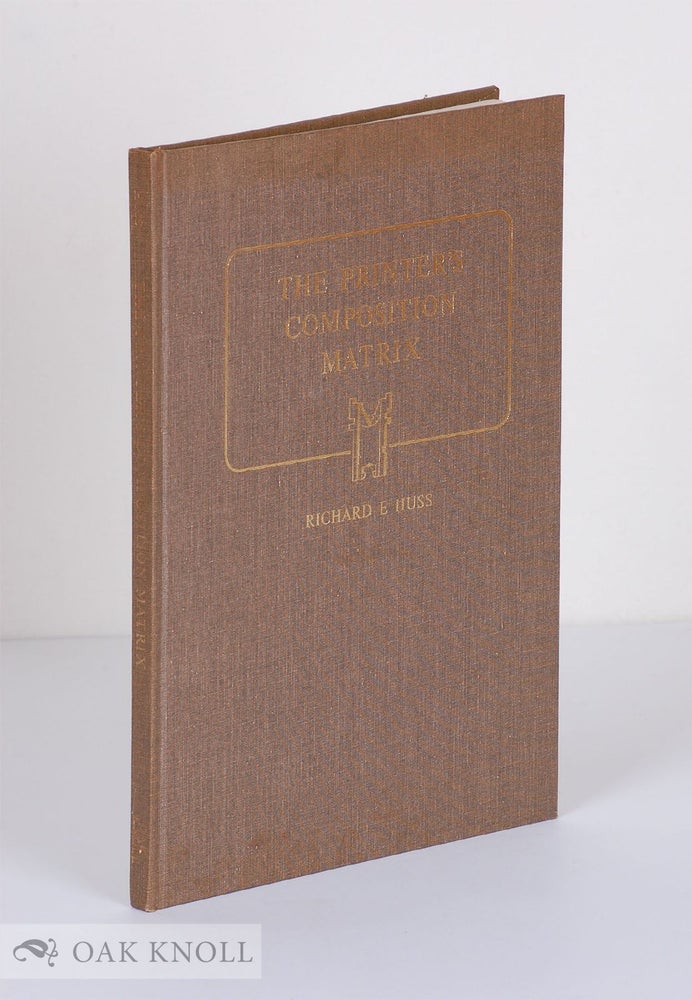THE PRINTER'S COMPOSITION MATRIX, A HISTORY OF ITS ORIGIN AND DEVELOPMENT.
- New Castle: Oak Knoll Books, 1985.
- tall 8vo.
- cloth.
- xii, 66 pages.
- ISBN: 0938768093
Price: $30.00 other currencies
Order Nr. 12424
Limited to 400 copies. Minor dampstain to preliminary pages not affecting the text, else a near fine copy.
This work discusses the development and use of the letterpress printer's composition matrix, showing its early and various forms in a way never described before. It describes details not revealed by the early makers of matrix-composing machines or by the historical texts which revealed the development of composing machines during the years 1885 to 1915.
Printing aficionados are familiar with matrix-composing machines - usually referred to as "hot-metal typesetters" - but there is little information on their predecessors or the history of problems that beset early prototypes. This book reveals some of those problems and describes the matrices and their manipulations in early successful matrix-composers. This book also includes, for historical reasons, a number of proposed but never commercially produced machines.
During the late nineteenth century, a surprisingly large number of attempts were made to create both patrix-using machines and matrix-using machines in which the "cold" and "hot" concepts were considered as substitutes for the time-honored method of setting types by hand. All the padres (cold) ideas were aborted or failed, while the matrix (hot) machines had some early successes and proved to be headed in the right direction for machine composition. Although the matrix methods were extremely diversified in construction and operation, they all followed one fundamental principle, that of assembling or moving matrices and casting either single-types or sluglines.
Well-illustrated throughout, this book is indispensable for anybody interested in the history of printing. It has been set by Linotype and printed by letterpress. A chronological list of 166 patented inventions, most of which are American in origin are included.

